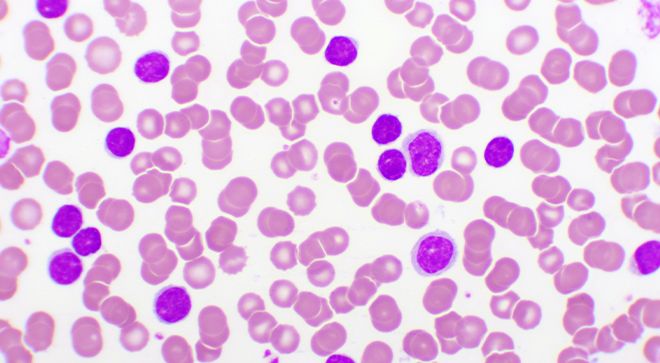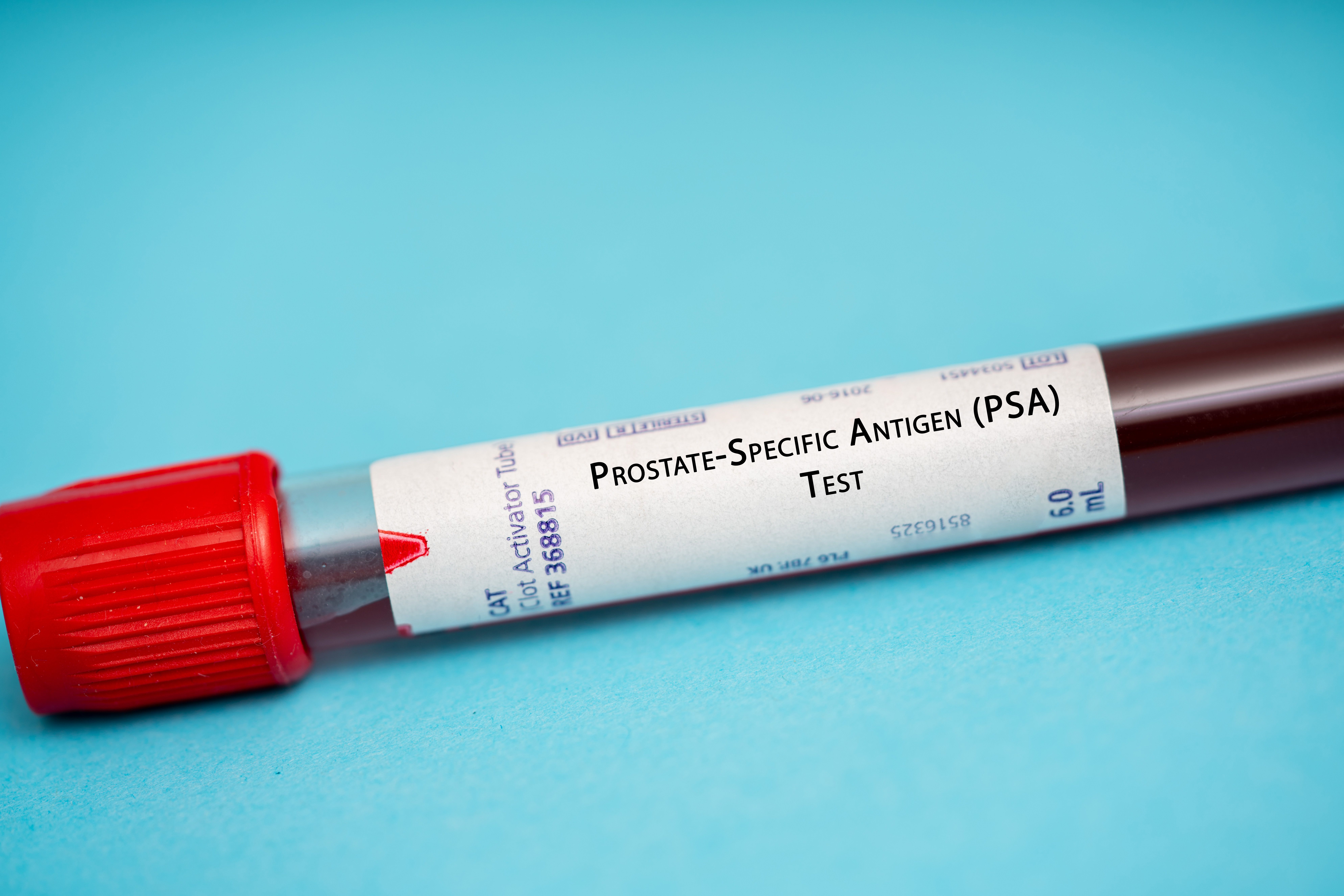Article
Pre- or Post-Transplant Xospata Shows Relapse-Free Survival Benefit in AML Group
Author(s):
Findings from a phase 3 trial demonstrated that half of patients with FLT3-ITD-mutant acute myeloid leukemia and detectable minimal residual risk derived a relapse-free survival benefit with Xospata.
Maintenance and posttransplant therapy with Xospata benefitted half of patients with FLT3-ITD–mutant acute myeloid leukemia and detectable minimal residual disease (MRD) versus those without detectable MRD.

Maintenance and posttransplant therapy with Xospata (gilteritinib) benefitted half of patients with FLT3-ITD–mutant acute myeloid leukemia (AML) and detectable minimal residual disease (MRD) versus those without detectable MRD, according to findings from a recent trial.
MRD refers to a very small number of cancer cells in the body during or after treatment, according to the National Cancer Institute. This measurement can help cancer teams determine whether a treatment is working for a patient’s cancer.
Findings from the phase 3 BMT-CTN 1506/MORPHO trial, which were presented during the 2023 EHA Congress, demonstrated that the two-year relapse-free survival rate (the percentage of patients who survive after treatment without any symptoms or signs of the cancer during a specified time) was 72.4% with Xospata compared with 57.4% with placebo.
However, when relapse-free survival was evaluated in the overall study population, Xospata resulted in an estimated 32% reduction in the risk of relapse versus placebo, which was not found to be statistically significant and missed the study’s primary end point. The two-year relapse-free survival rates were 77.2% with Xospata versus 69.9% with placebo.
The data showed that the relapse-free survival benefit with Xospata was lower in patients with MRD-negative disease.
“The study did not meet its primary end point, but I think this was a successful study. We learned how to use these drugs and in whom,” lead study author Dr. Mark J. Levis, program leader of the hematologic malignancies and bone marrow transplant program at Sidney Kimmel Comprehensive Cancer Center in Baltimore, said in a presentation of the results. “These data prospectively demonstrate a correlation between MRD and survival in posttransplant therapy in FLT3-ITD AML. (Xospata) should be a standard of care for those who are MRD-positive.”
Patients with AML who harbor a FLT3-ITD mutation often have a high risk of relapse as well as undergo allogeneic hematopoietic cell transplantation. Furthermore, detectable MRD before transplant is highly predictive for posttransplant outcomes. Although Nexavar (sorafenib) is often administered as posttransplant maintenance therapy, it is an off-label option (legal use of a drug to treat a disease though it has not been Food and Drug Administration approved) and often poorly tolerated.
In the phase 3 MORPHO trial, investigators sought to determine whether posttransplant therapy with Xospata has clinical benefit in patients with FLT3-ITD–mutant AML, and whether MRD should be used to guide Xospata treatment in this setting.
Researchers assessed data from 356 patients with FLT3-ITD–mutant AML, who were randomly assigned maintenance Xospata or placebo for 24 months.
The primary focus of the trial was to assess was relapse-free survival. Other areas of interest included overall survival (the time when a patient with cancer is still alive), effect of pre- and post-hematopoietic stem cell transplant MRD on relapse-free survival/overall survival, graft versus host-free relapse-free survival, event-free survival, non-relapse mortality, acute or chronic graft-versus-host disease (a condition that may occur after a transplant where the donated cells see healthy tissues as foreign and attacks them) and incidence of infections.
In the pretransplant setting, investigators identified 46% of patients as having detectable MRD. Fifty-two percent of patients’ MRD was not detected and MRD analysis was not performed in 2% of patients. In the posttransplant setting and pre-randomization, 19.9% of patients had detectable MRD6 or higher, which included 4.5% of patients with MRD levels that were undetectable prior to transplant.
Irrespective of study treatment arm, overall survival in patients with MRD6 at registration either before or after transplant was worse than those with MRD-negative disease.
Moreover, MRD status was found to influence both relapse-free survival with myeloablative conditioning and overall survival. Myeloablative conditioning with Xospata showed a relapse-free survival benefit in patients who were MRD positive over those who were MRD negative.
The relapse-free survival benefit with Xospata was seen across levels of detectable MRD present and prior use of FLT3 inhibitors. Myeloablative conditioning therapy was linked with improved overall survival versus reduced-intensity conditioning and also irrespective of MRD status.
Regarding safety, severe or worse treatment-related side effects were higher with Xospata compared with placebo at 61.2% versus 25.4%, respectively, as well as severe or worse treatment-emergent infections (32.6% versus 21.5%, respectively). Severe or worse myelosuppression (when bone marrow activity is decreased) was higher with Xospata (24.7%) than placebo (7.9%), as well as decreased platelet count (15.2% versus 5.6%, respectively), anemia (6.2% versus 1.7%), increased alanine aminotransferase (which may indicate liver disease; 3.4% versus 2.2%), and increased creatine phosphokinase (indicating stress or injury to the heart, muscle tissue or the brain; 6.7% versus 0%).
The Xospata arm also harbored more treatment-related dose interruptions (18%) and treatment-related withdrawals (15.2%) versus placebo (6.8% and 7.9%, respectively).
“We are encouraged by these data which explore the potential of (Xospata) in a maintenance setting," Dr. Ahsan Arozullah, senior vice president and head of oncology development for Astellas, the developer of Xospata, stated in a news release. “(Patients with) AML with a FLT3-ITD mutation often face worse outcomes than those with other mutations and have restricted post-hematopoietic stem cell transplant treatment options with unmet need. With these findings, we remain focused on sharing updates with the scientific community to inform continued innovation for the AML community."
For more news on cancer updates, research and education, don’t forget to subscribe to CURE®’s newsletters here.





